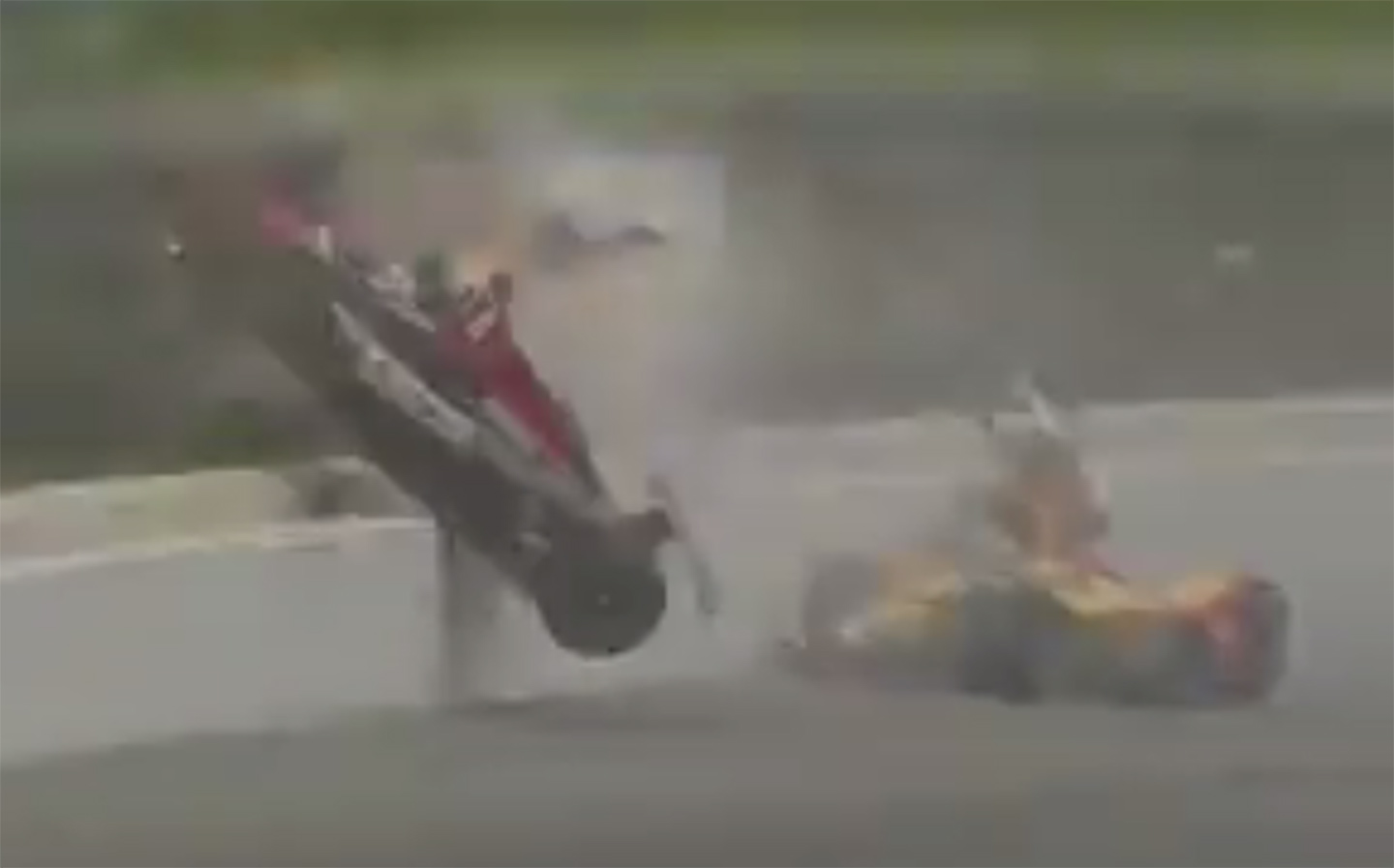Should IndyCar adopt the Halo safety device after this horrific crash?
Several drivers injured at Pocono Raceway
A NUMBER of drivers have been injured in a terrifying crash during yesterday’s IndyCar race at the Pocono Raceway in the USA.
During the sixth lap of 200, racers Ryan Hunter-Reay and Robert Wickens collided on one of the circuit’s banked corners.
The collision sent Wickens’ single-seater spinning in the air and smashing into the safety fence, with only the core tub of the chassis surviving the impacts.
Serious IndyCar Crash At Pocono Racewaypic.twitter.com/SC7l0cwORi
— Breaking911 (@Breaking911) August 19, 2018
Wickens suffered injuries to his right arm and spine in the incident, and is also being treated in hospital for a pulmonary contusion.
Miraculously, Hunter-Reay managed to escape the crash without any serious injuries, and was able to remove himself from his stricken car’s cocpit after the collision.
Video from Hunter-Reay’s car showed just how lucky he was, with Wickens’ car passing just above his head after clattering with the catch fences, amputating the video camera attached to the car’s airbox.
This is scary how close Robert’s car was to hitting Ryan’s car… Watch the spinning car take out the camera pod at the top left. I love Indycar racing, but man everytime I attend a race or put it on, someone always gets hurt pic.twitter.com/jPc9LTmd77
— Ryan Pistana (@ryanpistana) 19 August 2018
Three more drivers were also caught up in the crash, including the former Formula One competitor and 2017 Indy 500 winner Takuma Sato/ The additional trio managed to avoid serious injury.
Robert Wickens’ and Ryan Hunter-Reay’s crash does raose potential concerns over whether the IndyCar series should adopt new ‘Halo’ devices, introduced to Formula One this year, to protect single-seater drivers’ heads in collisions.

The 2018 Ferrari SF 71H, which features a ‘Halo’ head protection device
IndyCar drivers are particularly aware of the dangers after Justin Wilson’s death in 2015; he was struck in the head by debris at that year’s Pocono Raceway event.
On-track trials of an aeroscreen deflector shield system were conducted in early 2018, though the device has yet to be use in IndyCar races.
Tweet to @J_S_Allen Follow @J_S_Allen





